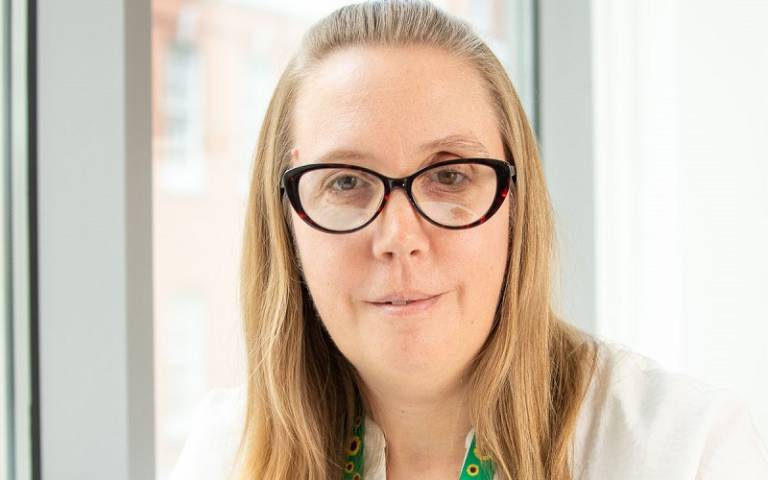Pip Jackson is UCL Head of Inclusive Environments.

I am Head of Inclusive Environments at UCL. I joined UCL four and a half years ago and started work on the ION-DRI project soon after. When I joined there was no one already in this role. Our second member of the team joined me in June 2023. Inclusive design, accessibility and sustainability are now the universities top priorities, as part of the university’s estates strategy.
My team have a varied role, but one of the main tasks is to advise all building projects, including IoN DRI, on how to achieve the highest level of accessibility and inclusive design.
We require those involved in building projects to build to more than just the minimum leave of accessibility set out in government regulations (Approved Document M). We seek building projects to achieve the higher level of accessibility (BS 8300: Design of an accessible and Inclusive built environment and PAS 6463 Design for the Mind)
“If we're going to make UCL a welcoming place, where everybody can bring their whole selves to work, then the environment needs to support that.
The newly released PAS 6463 Design for the Mind is particularly relevant to this project. It gives guidance on the design of the built environment to include the needs of people who experience sensory or neurological processing differences. It covers buildings and external spaces for public and commercial use, and residential accommodation for independent or supported living.
It gives guidance on elements including lighting, acoustics, décor, flooring, layout, wayfinding, familiarity, clarity, thermal comfort and odour; and incorporates principles to ensure that people with or having a range of processing differences are able to access and enjoy their experience of the built environment.
We meet with the design teams at various times along the building project process and review the plans and proposals and give input as to how they could be more inclusively designed. The design teams are then tasked with taking our advice on board.
For example, the main entrance to the ION-DRI centre originally had a revolving door, as part of its design. This, along with a side pass door is accessible, because it means that everyone can get in, but it still segregates users. I advised a more inclusively designed entrance, replacing the revolving door with double sliding doors, so everyone can enter together with no separation.
I will also be advising on things like colour contrast and controlling noise, particularly in patient areas; ensuring our wayfinding signage is consistent, working with the fire team on our evacuation design elements.
At the end of the project, I will undertake visits to keep make sure that things are actually being built to the building regulations and there aren’t any deviations to compliance.
My job is about ‘inclusive environments’, rather than just ‘accessibility’. If we're going to make UCL a welcoming place, where everybody can bring their whole selves to work, then the environment needs to support that.
Many people just think about accessibility as being a few ramps for wheelchair users, who, even in the disability field, make up approximately 5% of those who are disabled. ‘Inclusivity’ goes beyond this and looks at providing spaces for parents and carers, places for people to pray, places for people who aren’t able to self-regulate their temperature – for example someone going through the menopause, or on IVF treatment or taking medication to change genders. It might not mean that every space will work for everybody, but we need to give people a choice of spaces that will work for them.
 Close
Close

